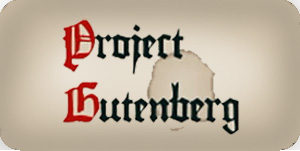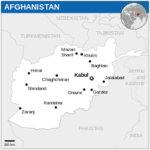OVT – VPRO ~ Het spoor terug, de koloniale kater St. Eustatius
 Sint Eustatius was de belangrijkste doorvoer- en handelshaven van de West Indische Compagnie. Het eiland werd in de achttiende eeuw ook wel de Gouden Rots genoemd. Het was verreweg het rijkste koloniale bezit in de west en via Sint Eustatius hielp Nederland de Amerikanen in 1776 met hun oorlog tegen de Engelsen. Een Amerikaans schip werd er zelfs begroet met elf saluutschoten, die door Amerika prompt werden geïnterpreteerd als de eerste erkenning van hun onafhankelijkheid.
Sint Eustatius was de belangrijkste doorvoer- en handelshaven van de West Indische Compagnie. Het eiland werd in de achttiende eeuw ook wel de Gouden Rots genoemd. Het was verreweg het rijkste koloniale bezit in de west en via Sint Eustatius hielp Nederland de Amerikanen in 1776 met hun oorlog tegen de Engelsen. Een Amerikaans schip werd er zelfs begroet met elf saluutschoten, die door Amerika prompt werden geïnterpreteerd als de eerste erkenning van hun onafhankelijkheid.
Maar hoe kijken de Sint Eustatianen aan tegen hun fiere koloniale verleden. Pieter-Bas van Wiechen ging naar het eiland en maakte de documentaire ‘De koloniale kater van Sint Eustatius’.
Luister: http://m.radio1.nl/Eustatius.html
Building Bridges: Cities And Regions In A Transnational World. Regional Studies Association Annual Conference 2016, Graz, Austria
Throughout history, cities and regions have been cornerstones of economic, social and cultural institution building and centres of communication and trade across borders of empires and nations. In a globalised world dominated by multi-level governance and declining economic and political significance of the nation-state, cities and regions are becoming ever more so important in building bridges across nations, supra-national unions, and even continents.
These challenges surpass the usual aspects of integration: it is not sufficient to reduce barriers for the mobility of labour, goods, services and capital, to create a homogenous competitive environment, and a solid monetary system. What is needed in addition are more elements of a new regionalism, which is based on non-hierarchical relationships, on self-government, and on the creation of flexible alliances leading to interregional transnational cooperation. The development of a region is affected by its competitive and complementary relationships with other increasingly distant regions.
Read more: http://www.regionalstudies.org/building-bridges-cities
TEDTalk – Lisa Bu ~ How Books Can Open Your Mind
What happens when a dream you’ve held since childhood … doesn’t come true? As Lisa Bu adjusted to a new life in the United States, she turned to books to expand her mind and create a new path for herself. She shares her unique approach to reading in this lovely, personal talk about the magic of books.
Harvard Classics (Bookshelf)
 The Harvard Classics, originally known as Dr. Eliot’s Five Foot Shelf, is a 51-volume anthology of classic works from world literature, compiled and edited by Harvard University president Charles W. Eliot, that was first published in 1909.
The Harvard Classics, originally known as Dr. Eliot’s Five Foot Shelf, is a 51-volume anthology of classic works from world literature, compiled and edited by Harvard University president Charles W. Eliot, that was first published in 1909.
Dr. Eliot, then President of Harvard University, had stated in speeches that the elements of a liberal education could be obtained by spending 15 minutes a day reading from a collection of books that could fit on a five-foot shelf. (Originally he had said a three-foot shelf.)
The publisher P. F. Collier and Son saw an opportunity, and challenged him to make good on this statement by selecting an appropriate collection of works; the Harvard Classics was the result. Eliot worked for one year together with William A. Neilson, a professor of English; Eliot determined the works to be included and Neilson selected the specific editions and wrote introductory notes (Kirsch 2001). Each volume had 400 to 450 pages or so; and the included texts are “so far as possible, entire works or complete segments of the world’s written legacies” (Going 2006).
The collection was widely advertised by Collier and Son, in Collier’s Magazine and elsewhere, with great success. As Adam Kirsch, writing in 2001 Harvard magazine, notes, “It is surprisingly easy, even today, to find a complete set of the Harvard Classics in good condition. At least one is usually for sale on eBay, the Internet auction site, for $300 or so, a bargain at $6 a book. The supply, from attics or private libraries around the country, seems endless—a tribute to the success of the publisher, P.F. Collier, who sold some 350,000 sets within 20 years of the series’ initial publication” (Kirsch 2001). A separate 20-volume selection by Eliot, the Harvard Classics Shelf of Fiction, was published in 1917.
Collier’s was a major publisher of sets in the early 1900s and throughout the century issued many multi-volume sets of authors as diverse as Charles Dickens, Rudyard Kipling, John Steinbeck, P. G. Wodehouse and Arthur Conan Doyle.
Currently, a hardcover set of the Harvard Classics (now in the public domain) is published by Easton Press and a paperback version by Kessinger Publishing.
See: https://www.gutenberg.org/Harvard_Classics_(Bookshelf)
George Context ~ Affordable Housing And The Future Of London As A Creative City
The question of how to mitigate, let alone solve, the problem of London’s cost-of-breathing crisis, sorry, cost-of-living crisis seems inescapable, like a perverse and all too real Millennium Prize Problem. It appears as though we have bound so far down an economic cul-de-sac, justified on the quasi-religious neo-classical truths of supply and demand and global competition, that advertising a £450,000 one bedroom flat as ‘ideal for first time buyers or as a pied-à-terre’ is apparently perfectly acceptable. The problems this plight presents are real and well discussed – homelessness, families evicted by unscrupulous buy-to-let landlords (who are perhaps second only to investment bankers in the UKs Most Despised Persons list), and overcrowding. What estate agents gleefully herald as ‘gentrification’, the newly elected Labour leader evocatively decries as ‘ethnic cleansing’. However, I want to consider this housing crisis from an alternative perspective, one informed as much by my career as a musician as it is by my academic desire to understand the operation, and consequences of, contemporary creative markets in urban contexts. I want to question the cultural ramifications of this housing crisis; the artistic implications of a farcical situation whereby, for example, Help to Buy is required by magic-circle lawyers – as per a great friend of mine recently. In short, what does the housing crisis mean for art, and for the future of London as a creative city.
Read more: https://www.opendemocracy.net/george-context/affordable-housing-and-future-of-london
Raul Dancel ~ Dreaming Of Own Home In Manila’s Slums

A row of decrepit apartments built on government land in Baclaran, a sprawling poor district south of Manila. In 1946, there were about 46,000 slum dwellers in Manila. Now, metropolitan Manila is host to about 2.1 million slum dwellers. -ST PHOTO: RAUL DANCEL
MANILA • I grew up in one of the many slums scattered all around metropolitan Manila. Ours was just south of Manila, in Baclaran, a district known for a sprawling shrine dedicated to the version of the Virgin Mary known as the Lady of Perpetual Help.
It was fitting, really. I always felt our neighbourhood was in perpetual need of help. We lived in one of the upper floors of a row of decrepit two-storey flats our landlord somehow managed to build on land he did not own. It was government land.
It was in the middle of thousands of shacks that were really nothing more than cardboard, plywood and tin sewn together with nails, chicken wire and adhesive tape covered with galvanised steel and held in place with cement blocks, used tyres and other heavy debris.
Read more: http://www.straitstimes.com/opinion/dreaming-of-own-home-in-manilas-slums




